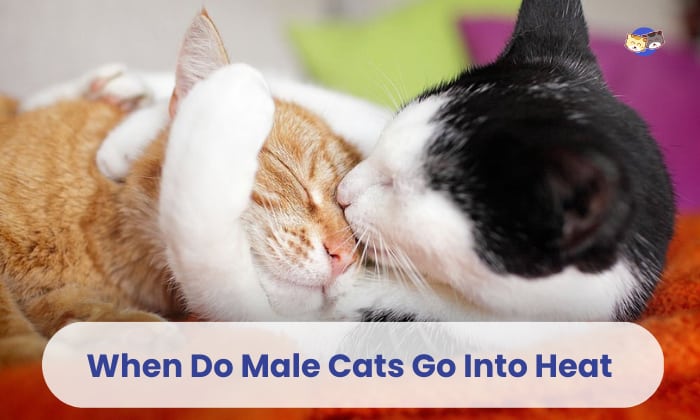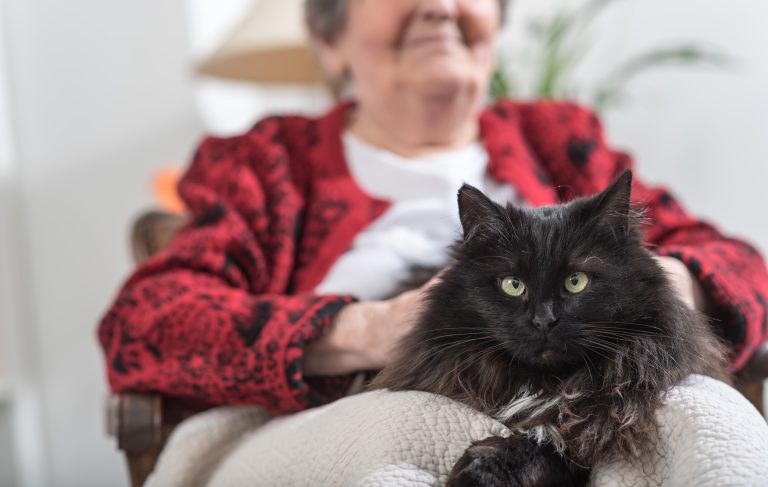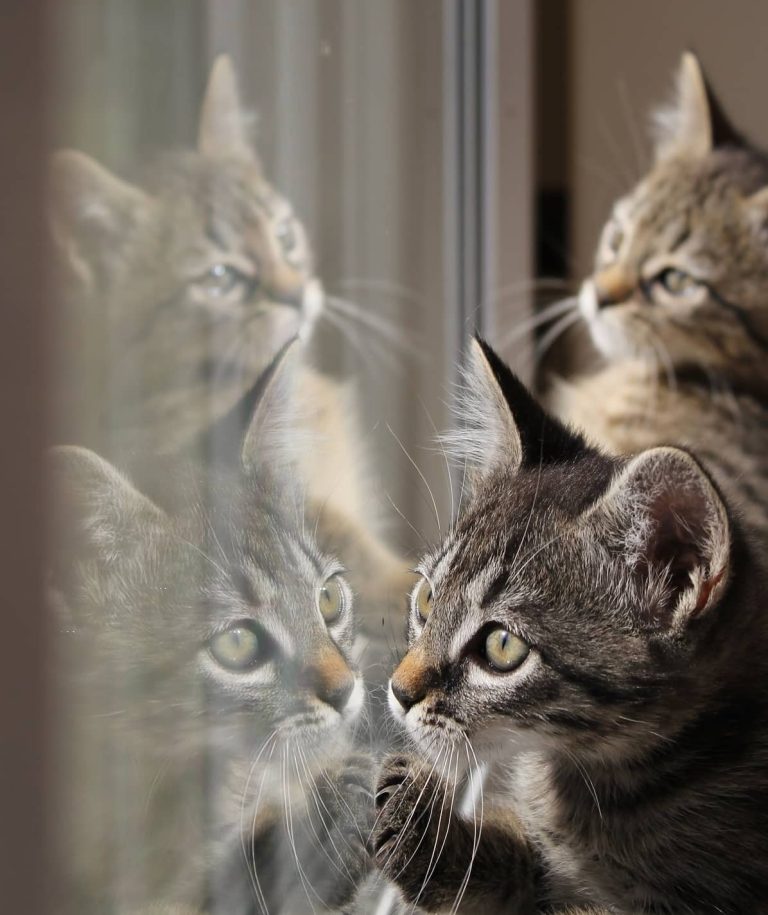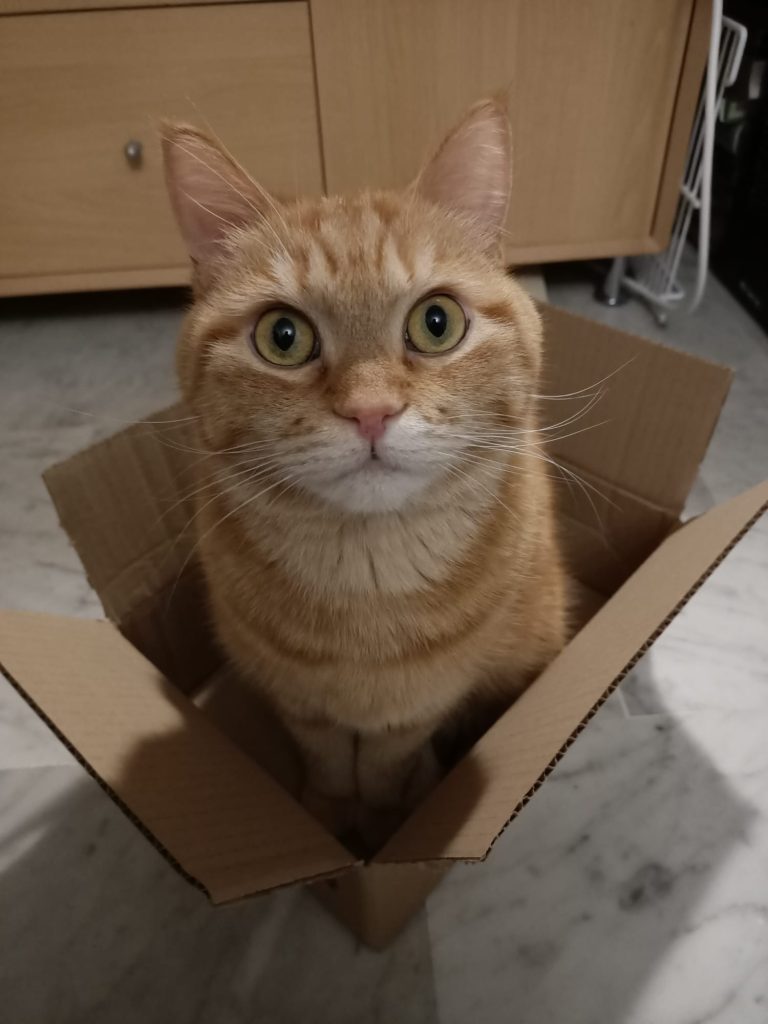When Do Male Cats Go Into Heat?

Male cats go into heat as early as 4-6 months old. During this time, they become sexually active and can start spraying urine to mark their territory, exhibiting aggressive behavior towards other males, and seeking out female cats for mating.
This period of heat, also known as “calling,” typically lasts 4-7 days and occurs multiple times throughout the year.
Understanding The Reproductive Cycle Of Male Cats
Male cats go into heat when they reach sexual maturity, usually around 6-12 months old. During this time, they become more vocal and may exhibit behaviors such as spraying, aggression, and roaming in search of a mate. Understanding their reproductive cycle is crucial for cat owners to manage their behavior and prevent unwanted pregnancies.
Overview Of The Male Cat’s Reproductive Cycle
In order to fully understand the reproductive cycle of male cats, it’s essential to delve into the intricate details of their unique biology. Unlike their female counterparts, male cats do not experience a traditional “heat” cycle. Instead, they have a more continuous reproductive pattern that can be influenced by various factors such as age, season, and the presence of female cats in the vicinity.
First and foremost, it’s crucial to recognize that male cats are sexually mature once they reach puberty, typically around five to six months of age. At this point, their reproductive organs, including the testicles and penis, are fully developed. However, this does not mean they will immediately start exhibiting sexual behaviors or seeking out mates.
The reproductive cycle of male cats is characterized by phases that can be broadly categorized into active and non-active periods. During the active phase, male cats are more likely to become sexually receptive and display specific behaviors associated with mating. On the other hand, the non-active phase is when these behaviors are less pronounced or absent altogether.
Differences Between Male And Female Cat Heat Cycles
While both male and female cats possess reproductive cycles, there are distinct differences between the two. Female cats experience a more pronounced and cyclical heat cycle, also known as estrus, which occurs periodically throughout their adult lives. During this time, female cats release eggs and display behavioral changes to attract potential mates.
On the contrary, male cats do not have a specific, recurring heat cycle. Their reproductive activity is influenced by external factors such as environmental cues and the presence of receptive females. Unlike females, male cats do not experience a visible discharge or exhibit obvious physical signs of being in heat. Instead, their reproductive behaviors are more constant and can be triggered by the opportunity to mate.
It’s worth noting that male cats are capable of breeding throughout the year, unlike female cats who are generally only receptive during specific seasons. This perpetual reproductive ability contributes to the feline population’s rapid expansion if left unchecked.
| Female Cat Heat Cycle | Male Cat Reproductive Cycle |
|---|---|
| Recurring heat cycles throughout adult life | Non-specific reproductive activity |
| Visible signs of being in heat | No visible signs |
| Attracted to male cats during heat | Receptive to mating opportunities |
| Seasonal mating patterns | Year-round reproductive capability |
Understanding the differences in the reproductive cycles of male and female cats is crucial for responsible pet ownership. It helps pet owners make informed decisions about spaying and neutering, managing breeding programs, and preventing the unwanted proliferation of stray and feral cats.
Signs And Symptoms Of Male Cats In Heat
Male cats typically go into heat between the ages of 5 and 12 months. Signs of a male cat in heat include restlessness, increased vocalization, spraying, and aggression towards other males. It’s important to neuter male cats to prevent these behaviors and unwanted pregnancies.
Behavioral Changes During Heat
During the heat cycle, male cats go through a series of behavioral changes that can be both surprising and challenging to their owners. These changes are driven by their strong instinct to reproduce and find a mate. Understanding these behaviors and knowing what to expect can help you better care for your male cat during this time. Some common behavioral changes include:
- Restlessness: Male cats in heat may become increasingly restless and agitated. They may pace, yowl, or cry out excessively. This behavior is a natural response to their heightened desire to find a female cat.
- Increased vocalization: One of the most noticeable signs of a male cat in heat is their increased vocalization. They may constantly meow or make loud, persistent cries to attract female cats. This vocalization can be disruptive and may occur day and night.
- Spraying: Male cats in heat may start spraying urine more frequently to mark their territory and advertise their availability to female cats. This behavior can be particularly frustrating for cat owners as it can result in unwanted odors and stains around the house.
- Aggression: The hormonal changes during the heat cycle can also make male cats more aggressive towards other male cats. They may engage in fights or display aggressive behaviors such as growling, hissing, and swatting.
- Increased affection: Contrary to their aggressive behavior, male cats in heat may also become more affectionate towards their owners. They may seek more attention, rub against furniture, people, or objects, and show more interest in being petted or snuggled.
Physical Signs Of A Male Cat In Heat
In addition to behavioral changes, male cats in heat also exhibit certain physical signs that indicate their reproductive readiness. These signs can help you identify if your male cat is indeed experiencing a heat cycle. Some of the common physical signs include:
- Swollen testicles: One of the most apparent signs of a male cat in heat is the swelling of their testicles. The testicles may appear larger and more prominent than usual.
- Restlessness and pacing: Male cats may pace back and forth, often with their tail held high, as they search for a female cat to mate with.
- Increased grooming: Male cats in heat may engage in excessive grooming, particularly in the genital area. This grooming behavior helps them maintain their scent and attractiveness to female cats.
- Presence of male pheromones: Male cats in heat start secreting pheromones that are designed to attract female cats. These pheromones can be detected by other cats and may contribute to territorial marking as well.
It’s important to note that while male cats do not go into heat in the same way as female cats, they can still exhibit behaviors and physical signs that indicate their reproductive desire. Understanding these signs and symptoms can help you provide the necessary care and attention to your male cat during this period.
Age At Which Male Cats Experience Their First Heat
Male cats, like their female counterparts, experience sexual maturity as they reach a specific age. This milestone is marked by the onset of what is commonly referred to as “going into heat.” Understanding the age at which male cats experience their first heat is essential for cat owners to ensure their pet’s overall well-being and to prevent any unwanted behaviors or potential pregnancy. Let’s dive into the typical age range for male cats to go into heat and what it means for their development and behavior.
Typical age range for male cats to go into heat
Male cats typically reach sexual maturity between the ages of 5 and 12 months. This age range can vary slightly depending on various factors, including genetics and environmental conditions. It’s important to note that individual cats may exhibit different signs of sexual maturity within this age range. While some cats may display behavioral changes and begin marking their territory as early as 5 months, others may not show signs until closer to 12 months.
During this period, male cats may display several physical and behavioral changes associated with sexual maturity. One of the most common signs is an increased interest in female cats, often leading to excessive vocalization and attempts to break free from home to roam in search of a mate.
It’s crucial for cat owners to recognize these signs of sexual maturity and take appropriate action to curb any potential unwanted behaviors. Neutering your male cat can help prevent these behaviors, reduce the risk of certain diseases and conditions, and contribute to overall feline health. Consulting with a veterinarian regarding the best time for neutering can provide valuable guidance and ensure your male cat transitions smoothly into adulthood.
The age at which male cats experience their first heat can range from 5 to 12 months. Being aware of these developmental changes will enable cat owners to provide proper care and make informed decisions regarding their male feline companions.
Frequency And Duration Of Male Cat Heat Cycles
Male cats go into heat when they reach sexual maturity, typically between 5-12 months old. Their heat cycles can last for several days to weeks, and can happen multiple times throughout the year. It is important for owners to understand and manage these cycles to prevent unwanted behaviors and mating.
How Often Do Male Cats Go Into Heat?
Male cats, also known as toms, have a unique reproductive cycle that differs from their female counterparts. While female cats go into heat multiple times throughout the year, the frequency at which male cats go into heat is less frequent. Unlike females, who experience heat cycles every two to three weeks, male cats generally have a more irregular heat schedule.
On average, male cats go into heat two to three times a year. However, this can vary depending on several factors, including the breed, age, and overall health of the cat. Some male cats may go into heat more frequently, while others may experience fewer heat cycles throughout their lifetime. It is essential for cat owners to understand the signs of heat in male cats to ensure their pets’ wellbeing.
Duration Of A Male Cat’s Heat Cycle
The duration of a male cat’s heat cycle is relatively shorter compared to female cats. While female cats typically stay in heat for around a week, male cats often have a shorter heat period of about 3-5 days. During this time, male cats may display various behavioral changes and exhibit signs of sexual interest, such as increased vocalization, restlessness, spraying urine to mark territory, and attracting female cats.
It is important to note that male cats’ heat cycles can vary in duration, just like in females. Some male cats may have shorter heat cycles, lasting only a couple of days, while others may experience a slightly longer duration. By understanding the typical duration of a male cat’s heat cycle, cat owners can be better prepared to provide them with the necessary care and attention during this time.
Factors Affecting Male Cat Heat Cycles
Understanding the factors that influence male cat heat cycles is crucial for cat owners and breeders alike. While most people associate heat cycles with female cats, male cats also experience these reproductive phases. However, the factors affecting male cat heat cycles differ slightly from their female counterparts. In this article, we will explore two key factors that influence when male cats go into heat: seasonality and environmental factors, as well as male cat health and reproductive issues.
Seasonality And Environmental Factors
Just like female cats, male cats are influenced by seasonality when it comes to their heat cycles. The change in the length of daylight hours and fluctuations in temperature play a significant role in triggering male cat heat cycles. Typically, male cats experience their highest level of sexual activity during spring and summer when days are longer and temperatures are warmer.
Moreover, the presence of female cats in heat can also impact male cat heat cycles. The scent of a female cat in heat can stimulate male cats, even if they are indoors. Thus, if there are female cats in heat nearby, it is likely that the male cat will also be triggered to enter his heat cycle.
Additionally, environmental factors such as the presence of other male cats in the vicinity can influence when a male cat goes into heat. The competition for mating partners can cause male cats to experience heat cycles at different times, depending on the social dynamics within the group.
Male Cat Health And Reproductive Issues
Male cat heat cycles can also be influenced by various health and reproductive issues. Hormonal imbalances, infections, and age-related changes can all impact the timing and regularity of a male cat’s heat cycles.
Hormonal imbalances: Just like humans, male cats have hormones that regulate their reproductive cycles. Imbalances in these hormones can lead to irregular or absent heat cycles.
Infections: Certain infections, such as urinary tract infections or prostatitis, can interfere with a male cat’s heat cycles. It is important to monitor and address any signs of illness or infection promptly to ensure optimal reproductive health.
Age-related changes: As male cats age, their heat cycles may become less frequent or less intense. Older male cats may experience longer intervals between heat cycles or may exhibit less interest in mating.
By understanding the factors that influence male cat heat cycles, cat owners and breeders can better anticipate and manage their cat’s reproductive behavior. Whether it’s adjusting lighting conditions, monitoring health, or providing appropriate social dynamics, recognizing these factors can help ensure a healthy and well-regulated male cat heat cycle.

Credit: www.youtube.com
Frequently Asked Questions On When Do Male Cats Go Into Heat?
When Do Male Cats Go Into Heat?
Male cats typically go into heat when they reach sexual maturity, which usually occurs between 5 to 12 months of age. However, unlike female cats, male cats do not experience a specific reproductive cycle and can be sexually active throughout the year.
Conclusion
Male cats typically go into heat when they reach sexual maturity, which can be as early as 5 months old. During this period, they may exhibit various behavioral changes and show a strong interest in mating. Knowing when male cats go into heat is important for responsible pet owners to ensure their furry friends’ well-being and to consider appropriate measures such as neutering.
By understanding their pets’ reproductive cycle, owners can provide the necessary care and support for their male cats.






